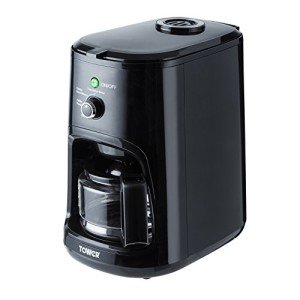Fixing a Drip Coffee Maker
If water is leaking out of the safety valve, it's time to fix the leak. It's likely that you can fix it.
We will also discuss how to maintain the coffee maker and discover various ways to make great coffee using a drip coffee machine.
1. Carafe Leaks
Pouring hot water on ground coffee beans, and allowing it to soak before putting the coffee into a vessel like carafe. The coffee can be brewed with various methods and equipment. The most common methods are pour-over, French drip, and automatic drip.
Using a drip coffee maker is an excellent method to get your morning coffee fix without having to wait for a cup of tea in a cafe or wait for it to brew at the office. However the convenience of these machines could also bring problems when they fail to function properly. One of the most common issues is that the coffee pot can leak when you try to pour from it. This can be a nuisance and can make your coffee messy but it can also cause burns to your hands or other surfaces.
The reason the coffee maker may leak when you attempt to pour is because of the way it is set. The spout of a carafe is typically located in the back of the pot, close to the water reservoir. This is because there isn't enough room in the front of the container to accommodate an spout that is deep and easy to pour from.
Liquids tend to follow the path of least resistance, so when it comes to flowing liquids, they'll go where the lower pressure is. Some older drip coffee makers drip when you pour.
There is a simple solution to this problem though. You can solve this issue by moving the spout to the front of the carafe. This will eliminate your dribbling problem and also save you the hassle of cleaning your counters every morning.
Another thing that could be causing the dribbling could be the amount of coffee you pour into the carafe. It is recommended to use two tablespoons of coffee each six ounces of water. The ratio may require adjustment if the density of the ground changes. A kitchen scale is a useful tool to monitor the ratios between water and coffee and to prevent over- or under-extraction.

2. Spout Leaks
If you've seen any low-cost drip coffee machine s you'll know that they are available in a variety of shapes and sizes. Some have thermal carafes while others don't; some dispense water using spout rings that are tight and others use wide ones.
One thing that affects the way all of these machines dispense water is the valve at the hose's end. The valve can get blocked by gunk, causing spout leaks. It's simple to fix. Unplug the pot and pour the water into the sink. Remove the valve and clean it.
3. Safety Valve Leaks
If you're lying in bed or running into the kitchen gung-ho to flip that magic switch, you expect Bialetti's pot to function as it should. However, if that sounding or promising rumbling doesn't happen, it might be time to check out what the problem is.
In the bottom of the bucket, there's a hole and a white tube which leads into it. During the boiling process, this tube carries the boiling water to the drip area. There's a one-way valve in this tube that lets cold water flow back down into the bucket but forces the boiling water bubbles into the coffee maker.
If you notice that your coffee maker releases steam or pressure through the safety valve frequently it is possible that the valve has become blocked and must be repaired or replaced. Place a bucket underneath the safety valve pipe, and then press the lever up several times. (Use gloves since the water is hot). This may resolve the issue but if not it's a good idea to call in a professional. This is a long-term job, as the valve must be removed and disassembled.
4. Filter Leaks
The reservoir and filter is the core of every drip coffee maker. They are the place where water begins and is finished its journey to make your morning cup of coffee. It is essential to follow the correct water usage guidelines, as well as cleaning and maintenance procedures during the brewing process. This will ensure that your coffee maker will continue to function at its peak.
When you switch on the coffee maker, water in the reservoir will be heated by the heating element that is resistive. The heat will rise up through an elongated white tube that is located beneath the reservoir's base. This hot water flows over the coffee grounds and begins to saturate them and extract their flavor. When the hot water is poured over the coffee grounds and the coffee oils released during roasting are taken up. These oils give coffee its distinctive flavor and aroma.
The coffee grounds that sit too long can cause mold growth. To avoid this keep the grounds in a way that allows them to dry quicker (e.g. hanging them, separate from the coffee maker, propped up for air flow or. ).
If the coffee grounds used aren't coarse enough or of the wrong size for your drip coffee maker they could block water flow or result in an overflow. To avoid this, it is recommended to use only one suitable-sized filter or paper for your drip coffee maker. In addition, it is recommended to experiment with brew time to determine which setting yields the best taste for your tastes.
To ensure maximum performance, regular cleaning and descaling is also required. Follow the manufacturer's recommendations for the proper cleaning and descaling methods to remove mineral buildup from your machine. Also, try to use filtered or bottled water instead of tap water as it will contribute to better tasting coffee.
